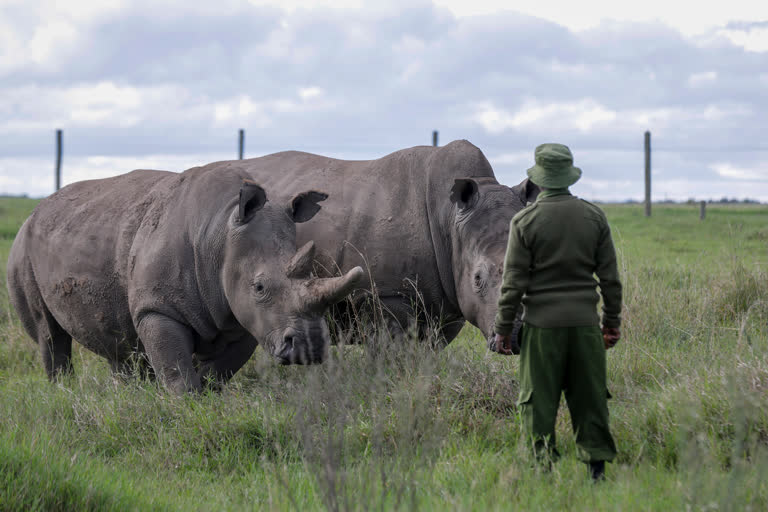Nanyuki: The armed rangers set off at dusk in pursuit of poachers. The COVID-19 pandemic has brought new alertness and a new fear.
With tourists gone and their money, too, protecting endangered wildlife like black rhinos have become that much more challenging. And the poachers, like many desperate to make a living, might become more daring.
Rhinos have long been under threat from poachers who kill them for their horns to supply illegal trade fueled by the mistaken belief that the horns have medicinal value.
Now, there are concerns that the COVID-19 pandemic may increase such poaching, said John Tekeles, a patrol guide and head of the dog unit at Ol Pejeta Conservancy in Kenya.
Read Also:Watch: New born elephant calves play with mother at Prague zoo
“We are more alert because maybe more poachers will use this time to come in to poach," Tekeles said.
The number of black rhinos in Africa has been slowly increasing though the species remains critically endangered, according to a report in March by the International Union for Conservation of Nature (IUCN). It credits, in part, effective law enforcement.
Ol Pejeta is home to more than 130 black rhinos, the single largest population in East and Central Africa, said Richard Vigne, the conservancy’s managing director.
